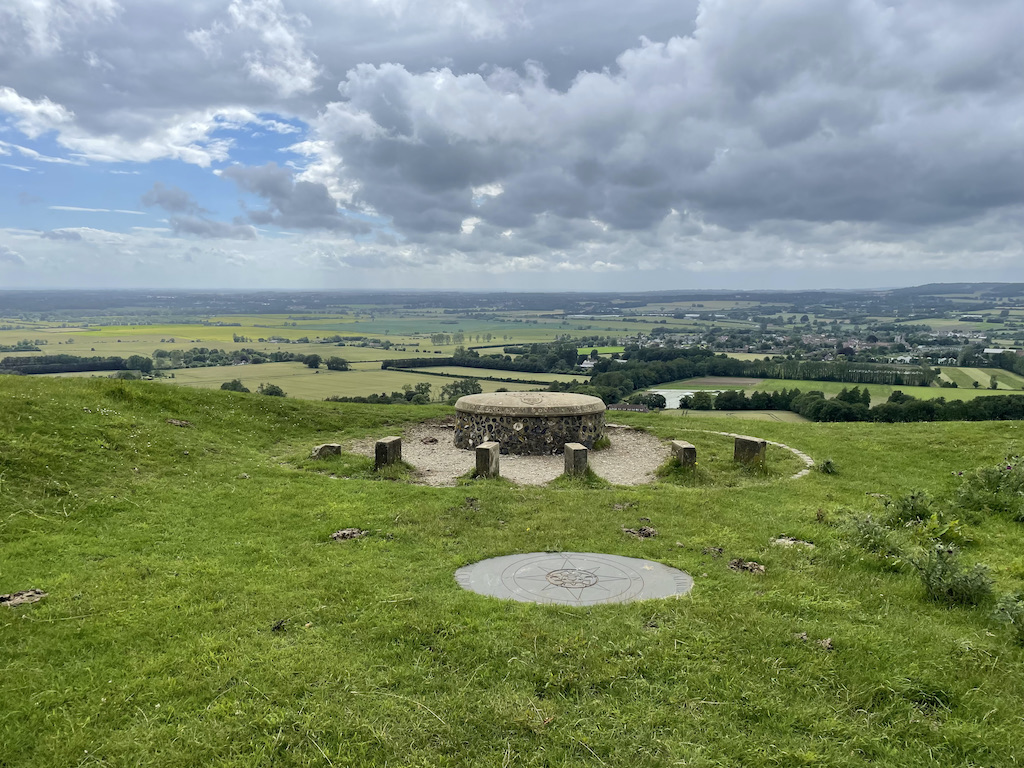Wild Camping along the North Downs Way Section 9 & 10: Lenham to Etchinghill via Wye
A creaky gate the night before, somebody sawing logs the night after — not necessarily the sounds I thought would keep me awake out in the woods. But as John Muir so nicely said, “In every walk with nature one receives far more than he seeks,” words of wisdom which surely cover acoustic surprises as well.
During the first night, I was probably just too tired to hear anything, whereby a few sips of port, purely for medicinal purposes of course, might have done its bit as well. The following night on the castle grounds, rain drops tumbling down our humble abodes must have blocked out any outside noise that could have raised suspicion, until the traitorous gates started playing their tricks on us. Night three though, I don’t think I have properly addressed yet in an effort to keep the previous post short and sweet for a change.

Well, whilst day two was kind enough to save the rain for when we were all zipped up in our tents, day three had different plans for us. The entire day was a bit hit and miss actually, but we got lucky most of the time as it started to drizzle whenever we got close to wooded sections offering protection. Unfortunately, our luck ran out just as we decided on a spot to pitch our tents, and this time, it wasn’t just a drizzle, oh no, the heavens opened and it was properly chucking down on us, creating little puddles where our heads were supposed to rest that night.
It only takes about ten minutes or so to get those tents up, although timing can vary depending on your approach, you might be faffing about chit-chatting your way through the whole process, or you’re trying to hurry and clumsiness gets in your way. Whichever category we fell into that night, the rain stopped exactly when we finished our erection efforts. The irony wasn’t lost on us and after ten minutes of colourful cursing and other non-verbal gesticulations, we couldn’t help but laugh as the sight of us must have been rather comical. Three time’s a charm they say, and well, having escaped the rain two nights in a row, I guess we were overdue for a proper soaking.
We took it with humour, wiped out our tents before putting our semi-dry gear into it and had dinner sat in our porches — as funny as it was, a soggy dinner might have pushed us over the edge. It seemed like the worst was over though. Those few minutes of downpour made up for the whole day judging by the puddles we were wiping away. Which also meant it was the first truly quiet night making other noises I might not have noticed (or successfully ignored) during previous nights more audible — it appeared that I got myself a snorer as companion!?! 🪚🪵💤
If it had been any other night, I probably would have run for the hills, but as we were already there (on hilly grounds that is), I decided to embrace the noise as weirdly comforting confirmation that I still had a supportive companion close by, his nightly orchestra distracting any wild animals that might be lingering around, a safety net I would no longer be able to rely on the following day when our shared journey came to an end.
It added an emotional element to the topographical rollercoaster of day four, a day that turned two into one and one into two, as I ended up covering almost two entire sections in one go. So, as always, shall we have a closer look at those sections first in case you decide to follow our big and small footsteps one day?
Section 9: Lenham to Wye, 11.1 miles (17.9 km)
Sticking with the topic of footsteps, section 9 gives you the option of following the ones of rather ancient travellers who pilgrimaged their way to the shrine of Thomas Becket at Canterbury. Not too keen on the shrine but rather on a cosy hotel bed, my hiking fellow Ian was opting for that route wherefore we split in Boughton Lees. He continued on to Chilham following the Canterbury Loop, the northern trail, while I carried on heading South, straight to Dover where we were due to meet again two days later to celebrate the completion of our North Downs Way endeavour, at least that was the plan.

As so often with outdoor adventures, plans are best when they leave some room for variation as you’re somewhat dependent on environmental as well as physical conditions. I’ve done my fair share of moaning about the latter, something I luckily pre-empted by establishing a Plan B in case Plan A was indeed too ‘Ambitious.’ Settling for Plan B meant we occasionally started and finished in the middle of the outlined sections, which is recommendable for wild camping purposes anyways as you’ll be away from civilisation, proper out in the wild — the clue is in the name I guess. It also meant that we spent our third night in Charing, a little village that’s worth a visit in itself according to NDW guide author Colin Saunders, that is after you’ve passed the Lenham Chalk Cliffs which left quite an impression on my hiking boots if you recall the picture gallery from the previous post.
Back to the charming village of Charing though, it allows you to reminisce about the olden days being home to various historic buildings, the remains of the Archbishop’s Palace most likely being the one worth mentioning in the pilgrimage context as it was used for overnight stays for archbishops that travelled between London and Canterbury. Only fitting that Charing turned out to be our resting place as well, whereby the community feel of the area left the biggest impression on me with local produce being offered on every corner you turn. A duck eggs display still comes to mind when thinking about it, probably because it struck a chord back then just having mentally recovered from the unusual ‘Easter’ egg hunt we had to face in 2020. Who thought ‘duck or quail’ would be a decision I ever had to make?! Let’s not even mention the toilet paper frenzy…
As it might be too early to have a little laugh about those things just yet, let’s swiftly move on to the overall route of section 9, which is an easy one for a change in terms of climbing, only the end requiring a bit of an effort, but trust me, it is well worth it, and who knows, you might want to have a little pitstop at Perry Court Farm beforehand where home-made cakes and other sweet distractions might lure you in. I remember standing at their rather inviting sign for quite a while myself deliberating what to do. Just having split up with Ian though and still having quite some ground to cover that day, I stuck with the apple I picked at the orchard I passed by five minutes before and carried on to the end point of section 9, starting point of section 10, and most likely my favourite place along the North Downs Way, at least when it comes to the Kent sections, if not overall.
I’m speaking of Wye Crown, a truly special place, not just for the stunning views it offers (once you’ve caught your breath again), but also for the fact that it’s the very spot where the North Downs Way was officially opened in 1978. Archbishop of Canterbury at the time, Donald Coggan did the great honour whilst admiring the grand views across the Weald of Kent and out to the sea, views you just can’t get enough of wherefore I’m just gonna let some pictures do the talking and encourage you to check it out for yourself if you haven’t done so yet as it’s even better in person.





My face says it all I think — a happy hiker indeed! While sharing such moments with a travel companion sometimes makes them even more special — case in point with the two lovely ladies I had to capture as they were the epitome of friendship goals in my eyes — being there on my own made me appreciate the vastness and tranquillity in an entirely different way. It possibly heightened my senses to what was going on around me as I watched a dad taking his little girl for a walk, holding on tightly as her little legs were stomping through the grass while she made her way to a water trough that piqued her interest. Turning around to appreciate the vastness of the place, I noticed grey clouds pulling in offering a picture-perfect contrast to the yellow fields below them. Turning even further, the colours and with it the mood switched again, from an ‘end of the world’-scene to blue skies with fluffy clouds playfully floating by.
Possibly the sight that captured the attention of those two ladies quietly taking in the view. No words were being uttered, they just stared in the distance resonating pure contentment and grace, untouched by the hustle and bustle around them. Kids were running up and down the hill playing with their siblings, parents cautiously watching them while exchanging their latest stories. Other hikers, myself included, walking along the ridge, taking pictures and videos while doing so. Everybody just passing by, moving on with their very own journeys, like leaves in the wind swaying wherever it blows them, left, right, back and forth, while they sat still, watching the world go by, completely at ease with themselves and everything around them.

I’m not sure if witnessing such peacefulness or simply having slowly recovered from the hardest ascent of the day made me relax and stroll more easily from there on, but Wye Crown, be it for the fellow admirers or far-reaching views, is definitely a place you do not want to rush and just pass by. No matter how tight your schedule might be that day, make sure to take a moment to fully appreciate the exceptional view and everything that comes with it, before moving on to your next destination. If taking the sectional approach, you even get to embrace (and climb) Wye Crown twice when finishing and starting your day, I can’t think of anything better than that, assuming your backpack will be lighter than mine was back then.
As we said before, every great view has to be earned first and while totally worth the effort on its own, rest assured that you’re in for a double-treat as you carry on along section 10.
Section 10: Wye to Etchinghill, 11.2 miles (18.1 km)
Wye Crown might be the end of section 9, but it was not the end of my day which led me to the Devil’s Kneading Trough next. Being a lover of a little legend here and there, I was sold on it before even getting there but once I did, it was obvious why only a mythical creature can be blamed for its existence given the scale of it.


Another sight to behold, no matter the weather, as some of my happy hikers wholeheartedly agreed with when I took them there this year (2021) as pictured above — some were lucky enough to catch a sunny day, whilst others were graced with the slightly more ‘atmospheric’ weather that accompanied me when first visiting the Trough on my own in 2020, a breathtaking view I decided not to capture back then as it appears.
Hardly a surprise though, as it is one of the (if not the) deepest dry ‘coombe(s)’ (which is how such dramatic drops are called) in the area. You might have heard of the Devil’s Dyke, the South Downs equivalent located in Sussex, near Brighton? It’s a very popular location for hikers and paragliders alike, and totally worth a visit as well if you haven’t been yet. But if keen on a bit more solitude, give the Trough a whirl and maybe take on the devilish challenge all of my hikers shied away from so far. According to local legends, the one who dares to walk around the coombe seven times and then drink the water from the natural spring close by is bound to see the lord of the underworld himself… — any takers?
Having more ground to cover back then, I happily passed as well and swiftly moved on after taking in the glorious views which are relatively easy to reach as walking is fairly level once you’ve tackled Wye Crown. As you carry on, such breathtaking views are followed by a few more literally breathtaking dips and hills as you head down to Stowting and Staple Farm, up to Farthing Common, and on to another coombe near Postling, a charming little village with a population of just under 200 — if you think your village is tiny, think again, so am I.
Nevertheless, people in Postling still have to drink and eat I thought, wherefore I jotted it down as refuel stop for the following day which was reserved for the last bit of section 10 and part of 11, another section and story to look forward to.
So, to wrap this one up real quick, some final notes on my solo-journey along with some of my favourite pictures of the day, of which there were many — apparently another consequence of parting ways with my camping companion, something that comes in rather handy now as I get to revisit and share those impressions with you, virtually:
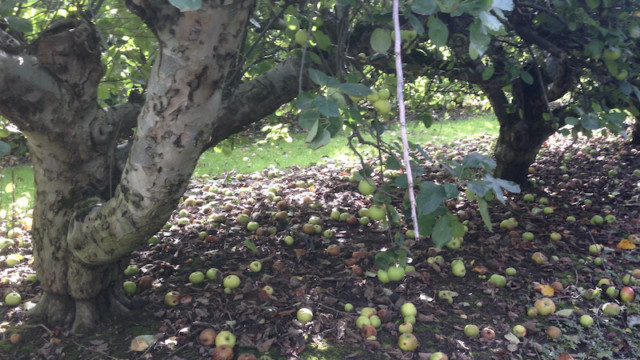
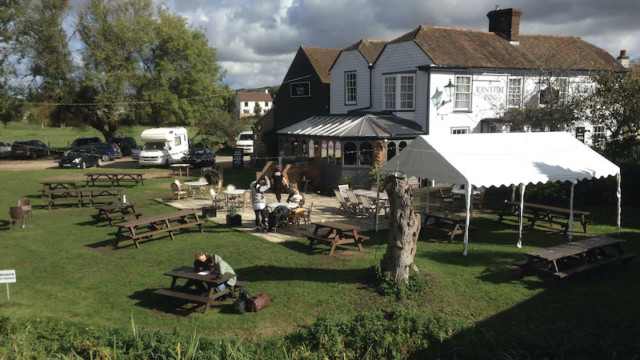
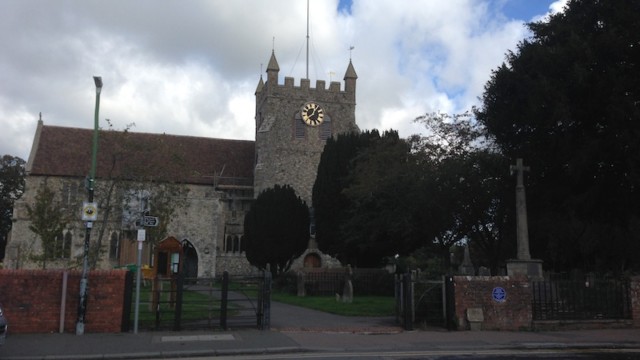
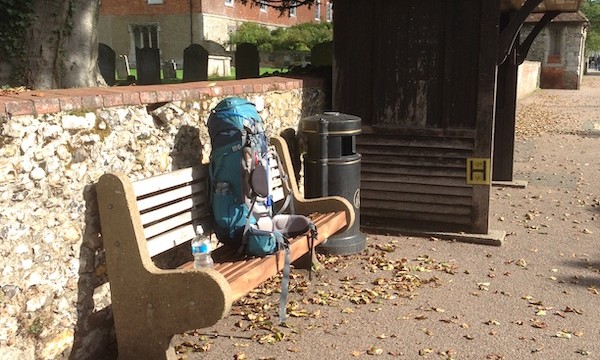
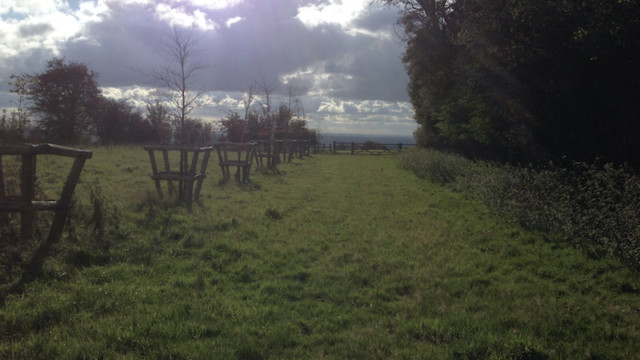
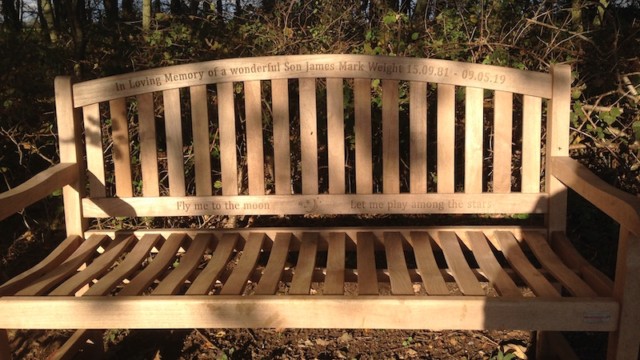
Nosey and Noisy Creatures en Route
Another side-effect of travelling solo, one which Ian proudly predicted, was people more frequently approaching me about what I might be up to. When he brought it up, I shook it off as something he said jokingly to put a comical twist on his sad departure, but to my surprise, it only took about five minutes for his prediction to come true as an elderly woman gave me advice on how to best cross an upcoming street once you walked past a big field leading towards the orchard mentioned above. Her kindness made me smile as I followed her advice, or so I thought, as I ended up doing exactly what she told me not to do — not wanting to make any excuses for my misguided steps, but it was one of those descriptions which only make sense once you’re actually confronted with the obstacle that’s been pointed out to you, the original path leading through a hedge that is now blocked to encourage you to cross further to the left where a bigger opening was created to make you more visible to drivers and giving you a chance to have a proper look before stepping onto this very busy road.

Hopefully reading this will help you find the right way or at least make you feel at ease if you end up at the same closed pathway prompting you to turn left. Or better yet, I hope that local lady shall pass by again and help you out. Or anybody else for that matter, as there were numerous occasions I got approached by people passing by, most of them just being friendly wanting to make conversation to break up their day, some driven by curiosity given my massive backpack, something I took with pride at first but which made me feel a bit uneasy the later it got. Good thing the only nosey creatures that crossed my path when the day drew to a close were some noisy little pheasants, as so often, cheerfully leading the way.
Following them waddling about, I came across a big field lined with some bushes offering perfect shelter from the winds that started to pick up towards the evening. With the sun slowly setting behind me, the timing could not have been any better wherefore I settled for a spot after closer inspection as I could hear cars passing by in the distance, not the most inviting sound. But as I was doing my rounds to assure I’m out of anybody’s eye sight, it became clear that the wind must have carried over the noise making it seem closer than it really was.
Decision made, that leafy little enclave was bound to be my resting place after a rather long day of walking getting me much further than expected, something Ian confirmed after we exchanged a few texts and pictures, and of course, after sharing my what3words location, which offered a bit more comfort during this still somewhat daunting experience. Not wanting to destroy the hardcore image you created of me in your head, but I happily admit that this bright red jacket was nowhere to be seen that night as I made sure to be as camouflaged as possible whilst setting up my tent, even my stove only got to make a brief appearance to avoid any chance of being spotted from the distance. First night on my own, I figured some extra precaution wouldn’t hurt.
Once in my tent, I was still alert to any outside noise and first assumed I would not be able to sleep at all but how wrong I was. I was out like a light as soon as my head hit my makeshift pillow possibly sending me off to the best night’s sleep so far, no rain, no gates, no snorchestra, pure silence, until a cheeky little alarm went off, … the start to the final section — hope to see you there! 🙋♀️🎒
When was I there? 11 October 2020
Section 11:
12 miles (19.3 km)
Section 10:
11.2 miles (18.1 km)
Section 9:
11.1 miles (17.9 km)
Section 8:
9.3 miles (14.9 km)
Section 7:
12.5 miles (20.1 km)
Section 6:
15 miles (24.1 km)
Section 5:
11.8 miles (18.9 km)
Section 4:
8 miles (12.8 km)
Section 3:
10 miles (16 km)
Section 2:
13 miles (21 km)
Section 1:
11 miles (17.7 km)
Informative Bonus
Why is Wye Crown called Wye ‘Crown,’ some of you might wonder? Great question, something I probably should have asked myself back then, but weirdly enough didn’t, until I stumbled across the answer when trial-walking a circular hike from Ashford International Station this summer, the one I took above depicted (as well as many other) happy hikers on by now.
When you follow the North Downs Way, chances are low for you to actually see it, but if you approach the Wye Downs ridge from the direction the lovely ladies were gazing at in above pictures, that’s when you will see this:

While I assumed both ladies were simply admiring the vast views and watching the world go by, they might have been discussing how the chalky feat that gave the area its name came into being as it was literally right in front of them:

In addition to being once voted the UK’s 3rd best place to live, another fun fact those lovely ladies might have been discussing, Wye is also rather famous for a massive hillside carving which can be seen for miles around, a sight that was created to celebrate the coronation of King Edward VII in 1902, a time when Wye was also home to a thriving agricultural college with students, as well as teachers, keen on leaving a mark, a crown-shaped one, which till this day boggles the mind.
The first challenge they had been facing back then was outlining a symmetrical design on an irregular surface. The college’s Lecturer in Surveying, ‘Tommy’ J. Young, came to the rescue. He used a lower vantage point, possibly from the fields where I took the picture, along with a team of students armed with flags and ready for instructions whilst stood on the hillside, to plot the crown’s outline. The second challenge was removing about 7,000 barrow loads of turf, soil, and chalk, an exhausting task said to have been completed by 35 students within 4 days, just in time for the event, which unfortunately ended up being postponed as the king fell ill with appendicitis.
A bit of a bummer given the efforts, but the college still celebrated the new crown on 30th June with a bonfire before illuminating the crown yet again for the actual coronation on 9th August 1902, that time with the help of 1,500 fairy lights — quite a sight I’m sure, one that was repeated for the coronation of King George VI in 1937, whereby electric lights took the place of candles.
Wye Crown, a sight that goes with the times while its views shall never get old if you ask me. But have a look for yourself. If not keen on wandering solo, drop me a message through my contact form and maybe join me and my fellow hikers next time we venture out to Kent again.
Either way, I hope to see you out there sometime! 🥾
